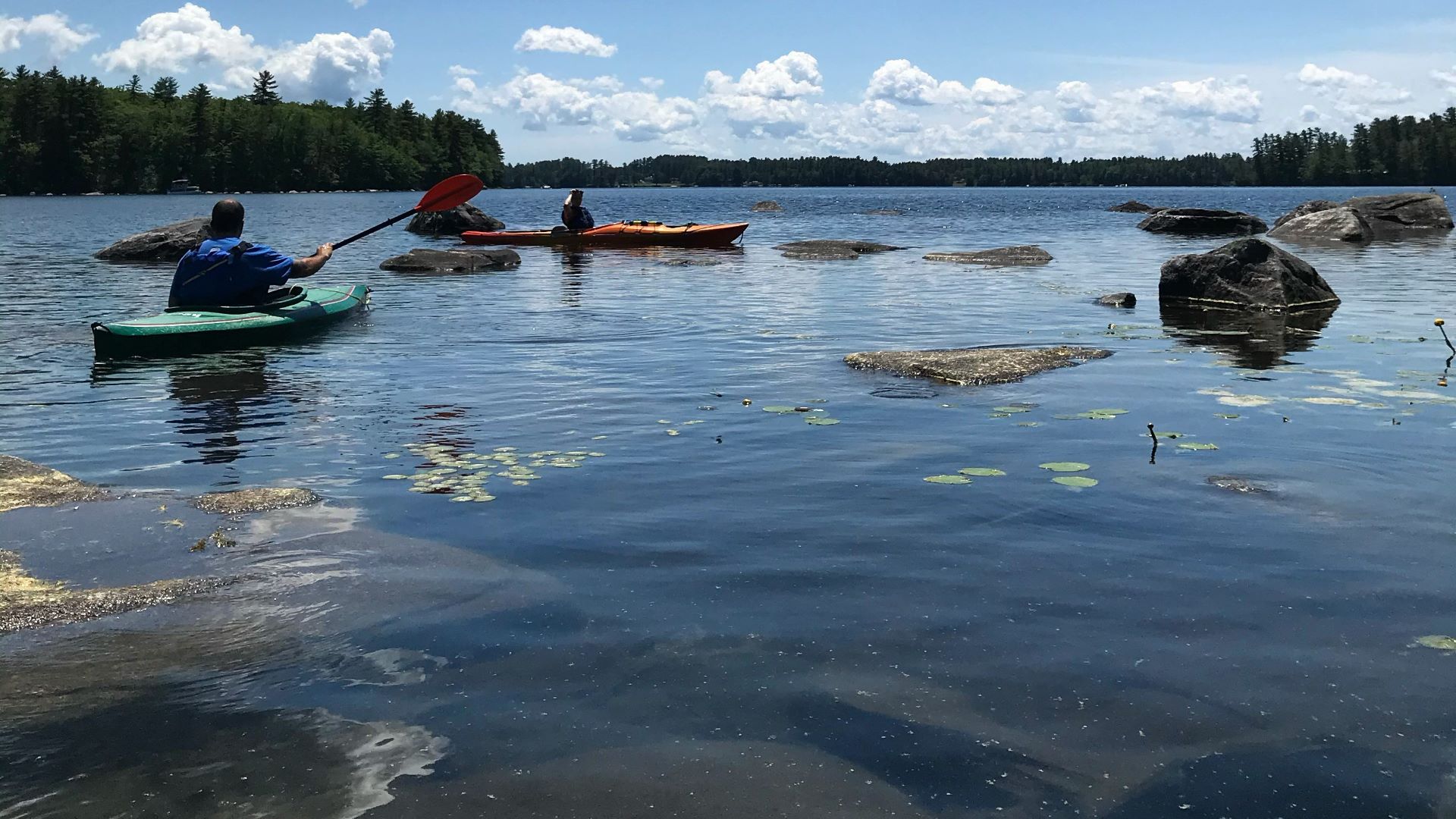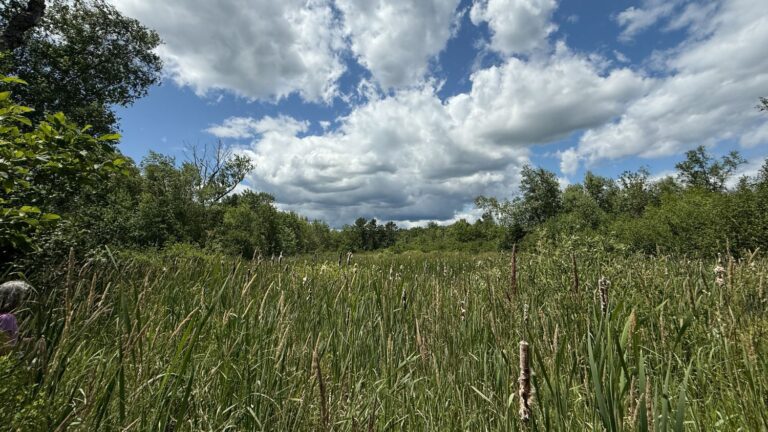Lawmakers failed to advance a bill addressing invasive aquatic plant infestations on Friday, weakening a slate of initiatives that environmentalists said would buttress Maine lakes and freshwater bodies in the face of climate change.
The bill would have provided a one-time $2 million infusion to a fund managed by the Maine Department of Environmental Protection to address aquatic plant infestations, which have become increasingly frequent and severe.
Lawmakers stripped the funding at a meeting of the Appropriations and Financial Affairs Committee on Tuesday, leaving the bill with a mandate but no money. The Senate then approved this updated version Friday afternoon but was thwarted by the House when it chose not to take up any legislation sent through by the committee.
L.D. 2141 would have required Maine environmental agencies to develop more stringent prevention and courtesy boat inspection measures — which are widely conducted by volunteer lake associations or other conservation groups — but without the additional money to manage current outbreaks.
Roughly 40 of Maine’s lakes, rivers and ponds are infested with some sort of invasive aquatic plant species, according to a January estimate by the Department of Environmental Protection.
There is a fear among lake groups that the number will grow without additional resources.
“As Maine’s climate changes and use of Maine’s water resources increases, Maine’s lakes are now at a higher risk of infestation from aquatic invasive species than ever before,” wrote Alison Cooney and Brett Willard, two leaders for the nonprofit conservation group Lake Stewards of Maine.
Environmentalists have said the fund the $2 million appropriation was bound for will be increasingly strained as Maine’s climate warms and its freshwater bodies become more hospitable to invasive aquatic plant species.
The bill is one of the five measures that Maine Audubon and other groups hope will help protect freshwater lakes and ponds, including a measure to increase the cost of state-mandated boat stickers that help fund the invasives prevention program, and another to strengthen shoreland zoning measures.
At the time of the bill’s introduction, legislators called the $2 million a “drop in the bucket” compared to the economic benefits Maine’s lakes and ponds provide — around $14 billion per year according to a recent valuation by the University of Maine and state DEP.
“We’re at that tipping point where we can invest now or have no option later,” said Rep. Tavis Hasenfus (D-Readfield), the lead sponsor of the bill, at a January hearing.
Leaders of regional watershed conservation groups said they were hoping for the additional financial support from the state to boost those programs. The groups often spend thousands of dollars on invasive monitoring.
Tom Mullin, executive director of Friends of the Cobbossee Watershed, said an infestation of the densely growing Eurasion watermilfoil unexpectedly expanded recently when it was seen growing beyond its typical season.
Invasive plants like Eurasian watermilfoil can blanket lake and river beds, crowding out native plants, and making swimming, boating and fishing more difficult.
“We were finding fragments and plants growing as late as early November this past year, which is way past the normal frame. And of course the warming bodies of lakes and ponds of Maine contributed to that,” said Mullin. Eurasian watermilfoil “highly fragments and is easily transported up and down the watershed. We were definitely concerned about that.”
Some legislators and state officials for DEP and the Maine Department of Inland Fisheries and Wildlife debated whether a one-time appropriation would be effective for managing invasive species, with some favoring baseline funding.
Lawmakers also predicted the uncertain outcome on the appropriations table that would come three months later, where no funding would be guaranteed.
“As a program manager, I like stable, consistent funding,” said Francis Brautigam, director of fisheries and hatcheries for Inland Fisheries and Wildlife, at the January hearing. “A one-time shot with X amount of dollars, it’s not the same thing. It’s very difficult to plan and maintain continuity with our program.”
Brautigam also said DEP and IFW were already working on expanding boat inspection and other preventative measures, which will be considered during biennial budget deliberations.
An official from the DEP program most actively involved with invasive aquatic plants appeared more open to the one-time cash injection.
The invasive aquatic species program recently had a budget of around $1.7 million, much of it coming from the sale of “Preserve Maine Waters” stickers that motorized watercraft must display.
John McPhedran, who oversees the program for DEP, said at a February work session that he and the program’s four-person staff are working across agencies to develop new initiatives to enhance prevention efforts — which would require more funding.
McPhedran also expected that a good portion of the bill’s funding could have been used by lake groups like Mullin’s through state grants.
“If we are to develop the program further as we think is needed to prevent new infestations, then yes, we are going to need more funding,” McPhedran said. “An infusion of $2 million would certainly be beneficial to the immediate needs of the program.”
Like the conservation groups they heard from, many members of the Committee on Inland Fisheries and Wildlife had climate change on their minds during the bill’s consideration.
“Not only will (climate change) increase the number of potential species that could be introduced, but it will also again, create a longer growing season,” said Scott Williams, a lake scientist who has been sounding the alarm in presentations to the Maine Land Use Planning Commission and Androscoggin River Watershed Council.
Williams, the science advisor for the nonprofit Maine Lakes, has trained hundreds of volunteers on invasive aquatic species identification during his decades-long career.
Through that time he has seen lake temperatures rise and become more hospitable to invasive species like Eurasian watermilfoil that favor warmer waters. Surface temperatures of northern New England lakes have increased at a rate of 1.44℉ per decade between 1984 and 2014 , according to a 2016 study in the journal Earth Interactions.
Along with rising temperatures, Maine lakes are subject to an increasing frequency of extreme rain events, which deliver larger volumes of stormwater runoff with sediment and nutrients that fuel harmful algal blooms.
Roberta Hill, another Maine lakes veteran and bioregional coordinator for the nonprofit Center for an Ecology-Based Economy, said in an interview with The Maine Monitor that such a disastrous combination occurred in Norway last summer.
One of the many severe rain events that ravaged western Maine washed out land near Lake Pennesseewassee, wiping out progress by the local lake association to reduce erosion.
A large algal bloom followed one of those storms in a local pond, according to Hill.
“It was a huge wakeup call, not only for property owners but people who swim regularly in lakes,” Hill said.
Hill and Williams emphasized the importance of prevention programs like courtesy boat inspections and teaching volunteers invasive species identification, which can help contain outbreaks early on and keep them from spreading to new water bodies.
Williams also commended state funding to expand undersized culverts in Maine, preventing them from washing out and sending nutrient-ladent sediment spewing into nearby water bodies.
But when it comes to containing both aquatic invasive species and erosion, Williams said there is never enough staff or resources to work with each lake community in Maine.
It will take volunteers, and technical and financial assistance from the state to do that work, he said, and is especially urgent given the current and future changes to Maine’s lakes.
Maine “lakes have been under the influence of climate change for many years,” Williams said. But “we’re just now I think reaching a critical tipping point where we’re starting to really see how those impacts are playing out.”







